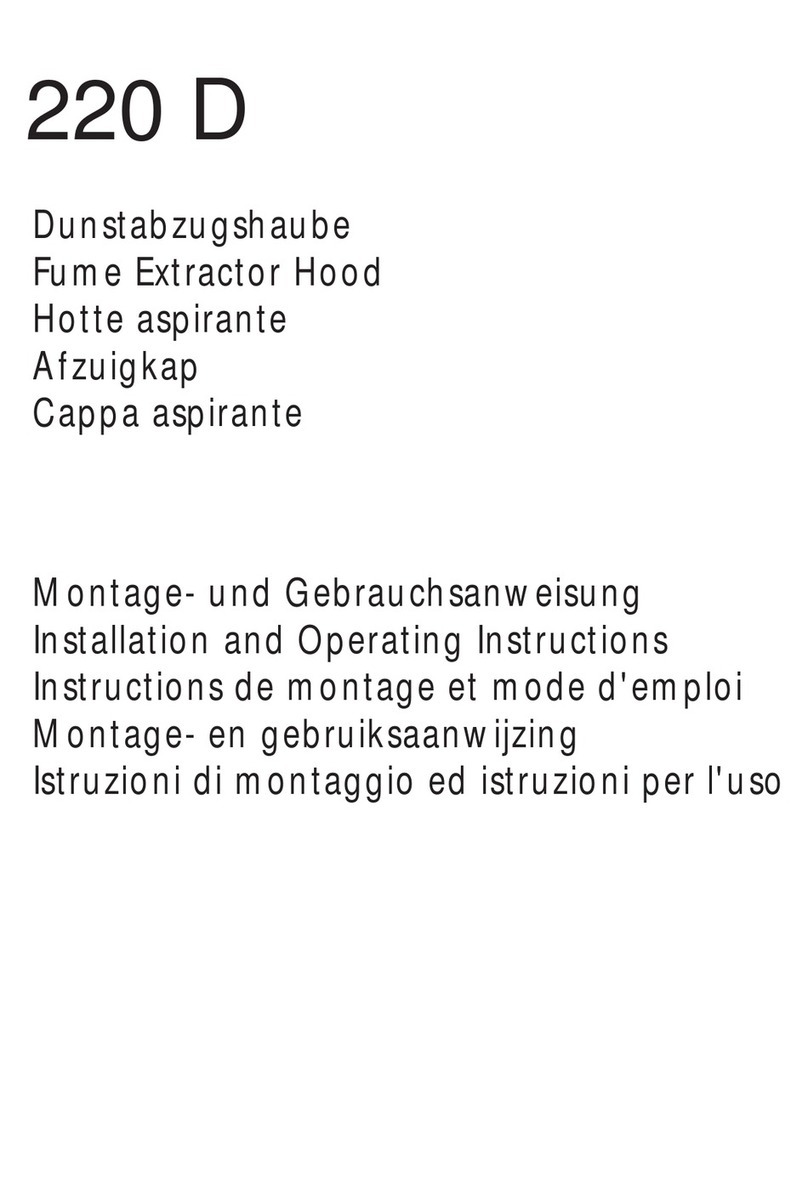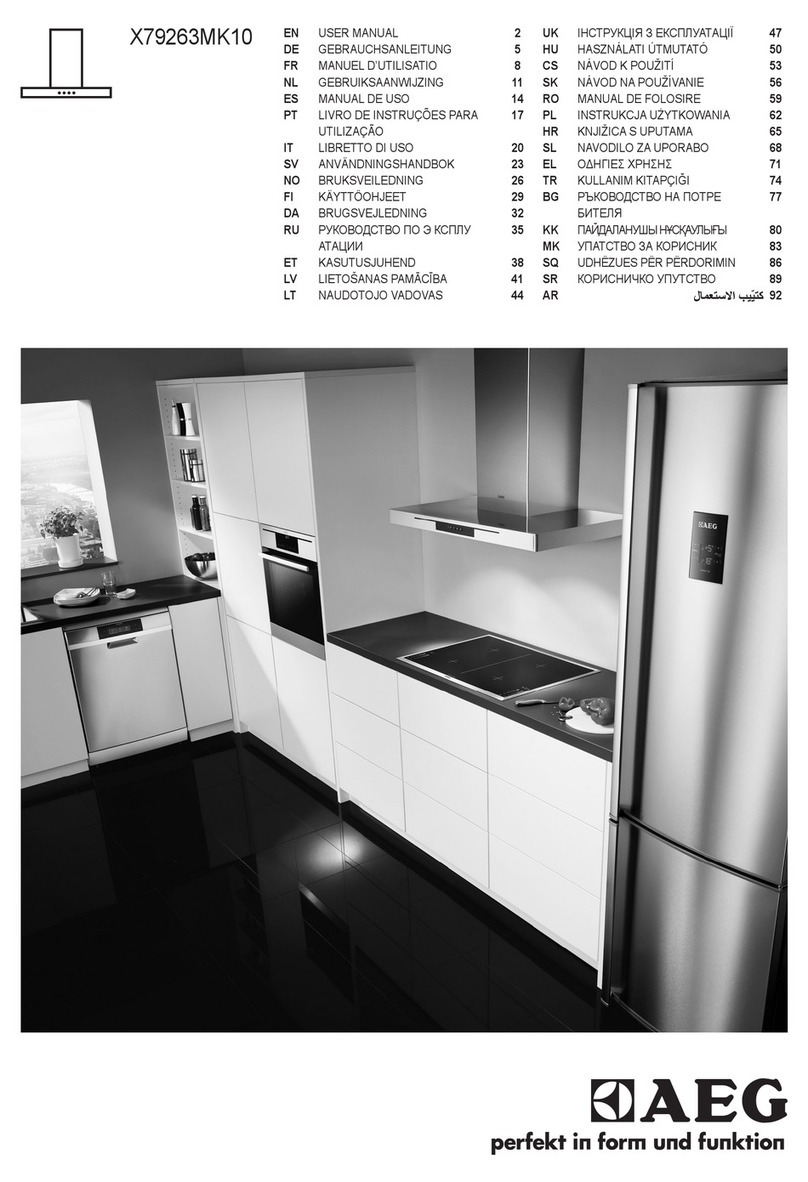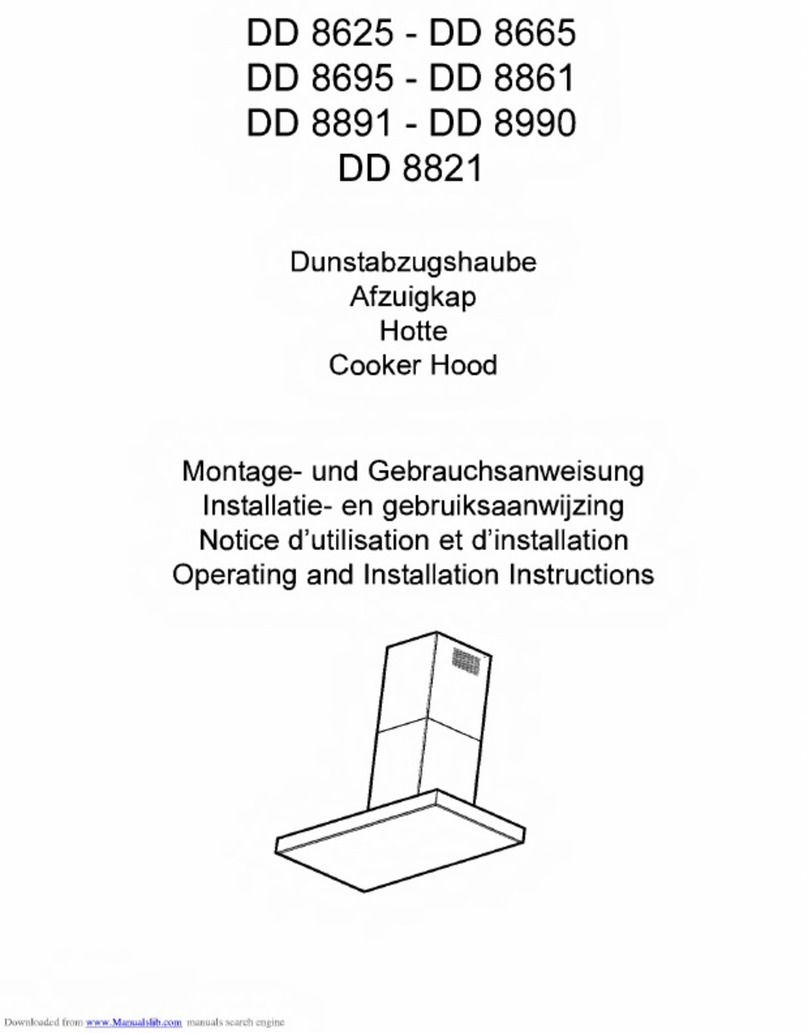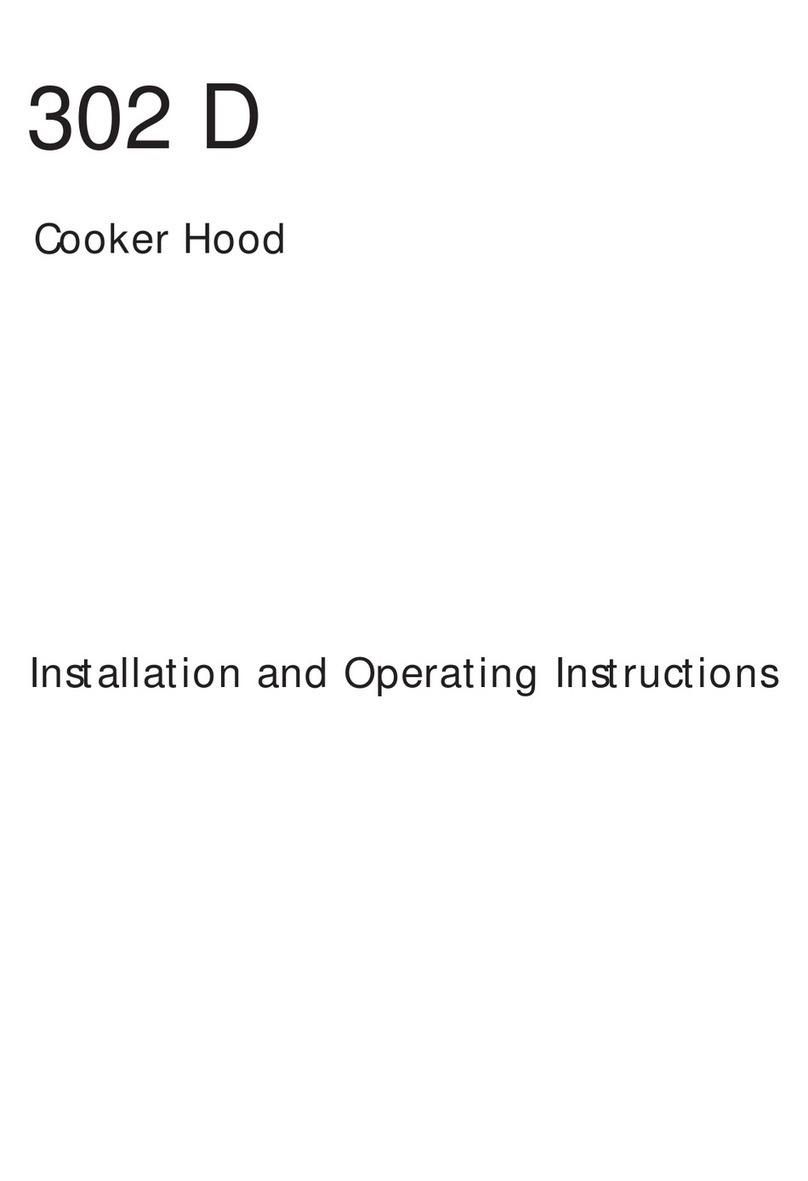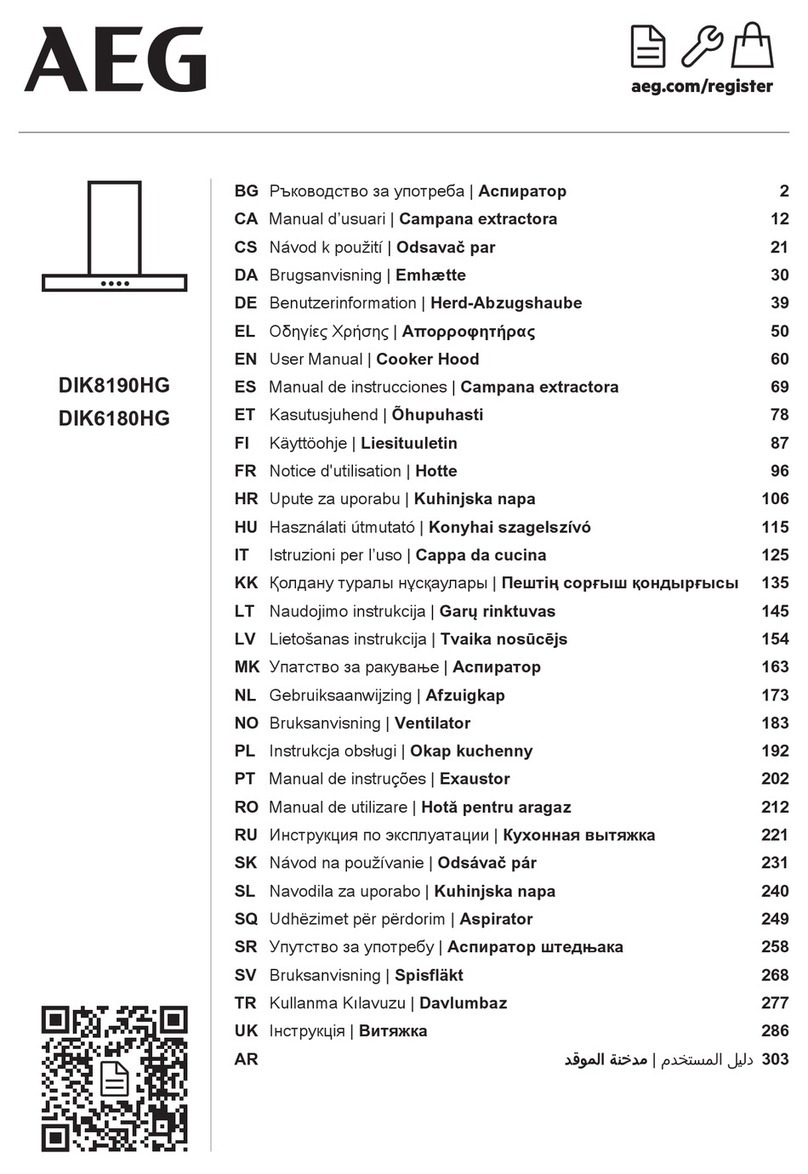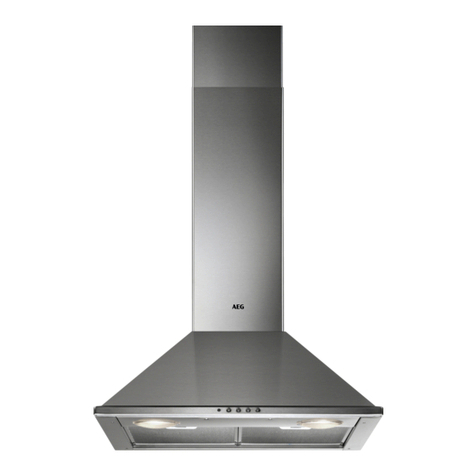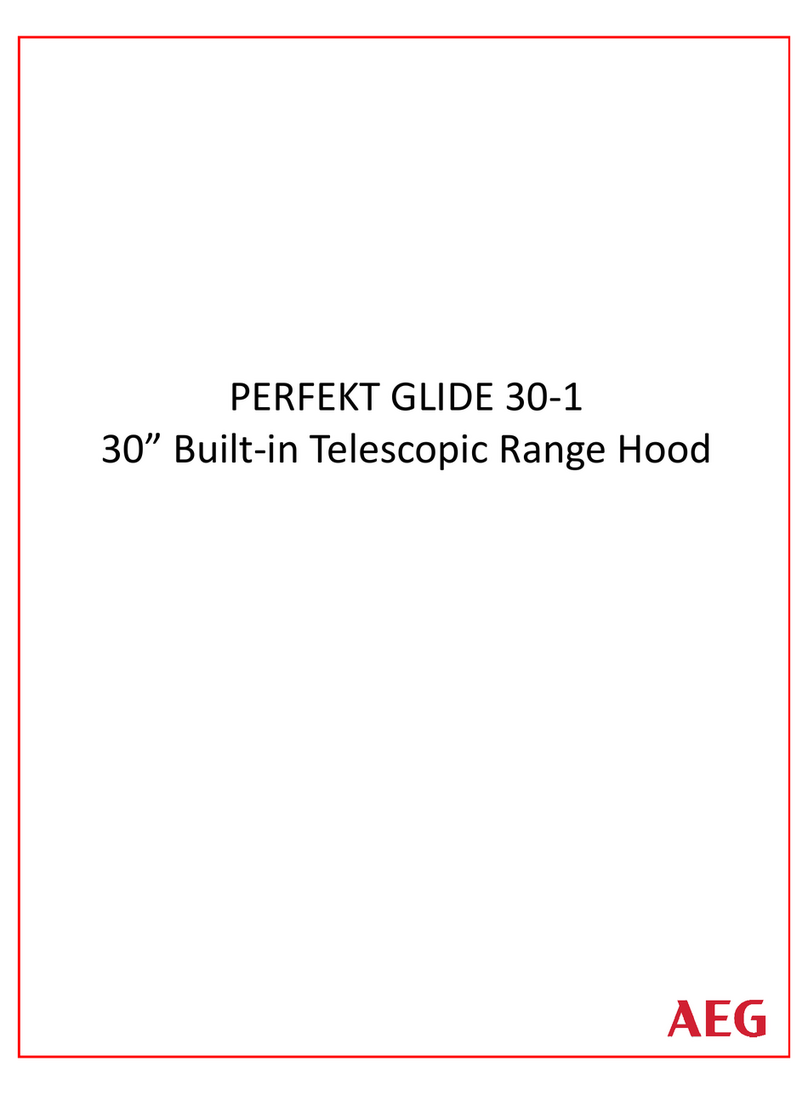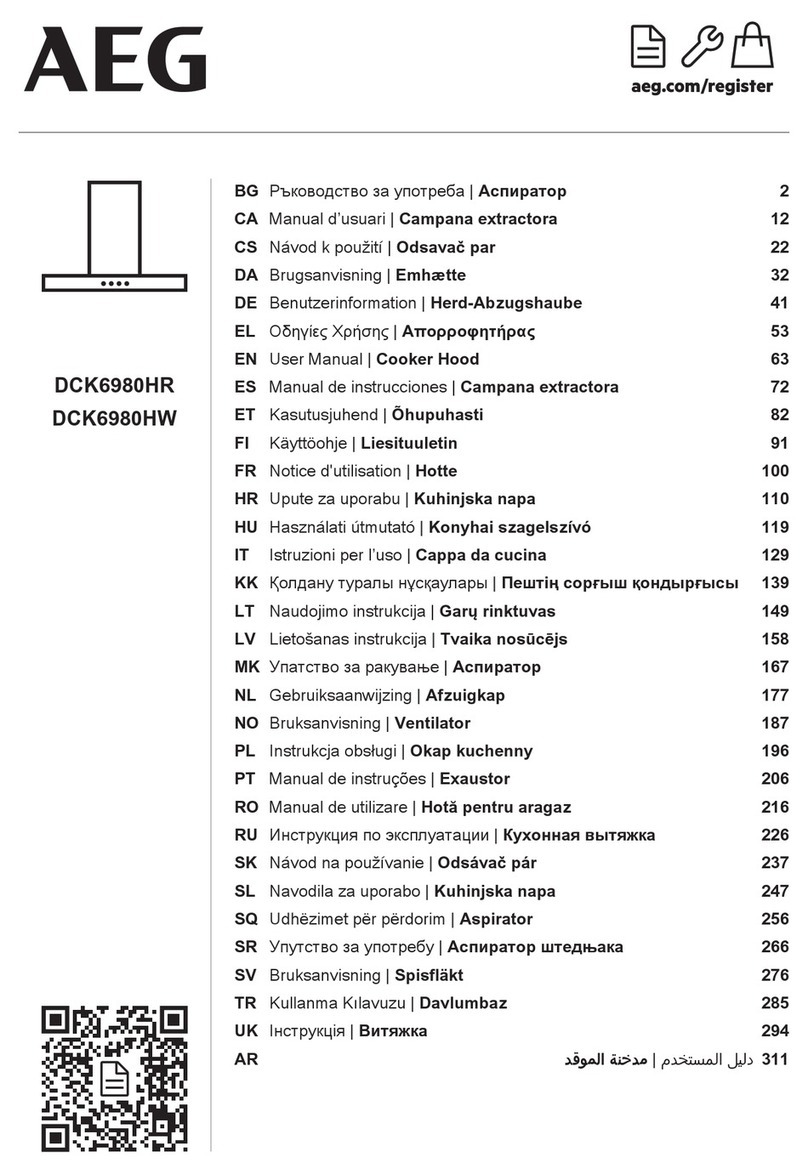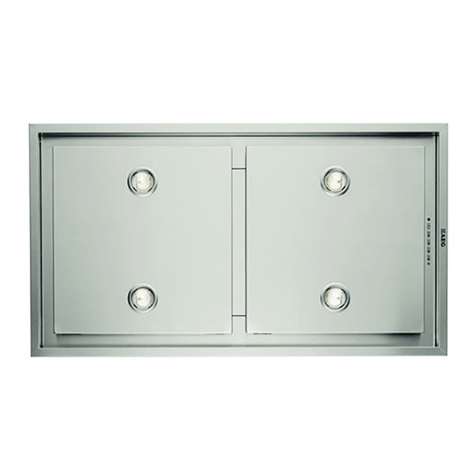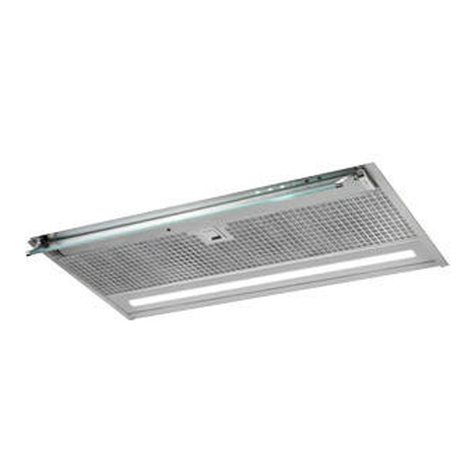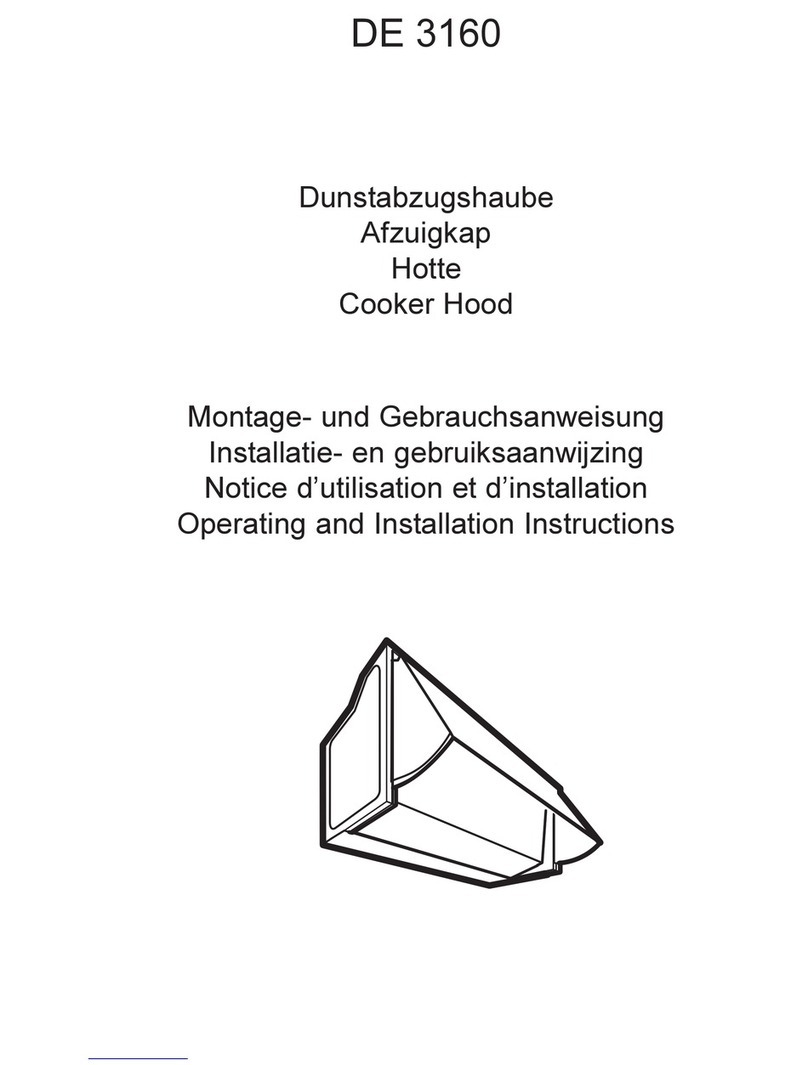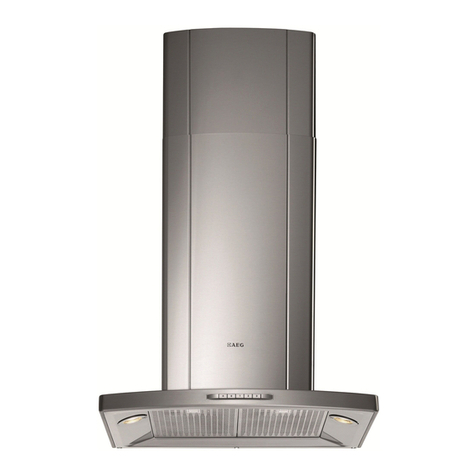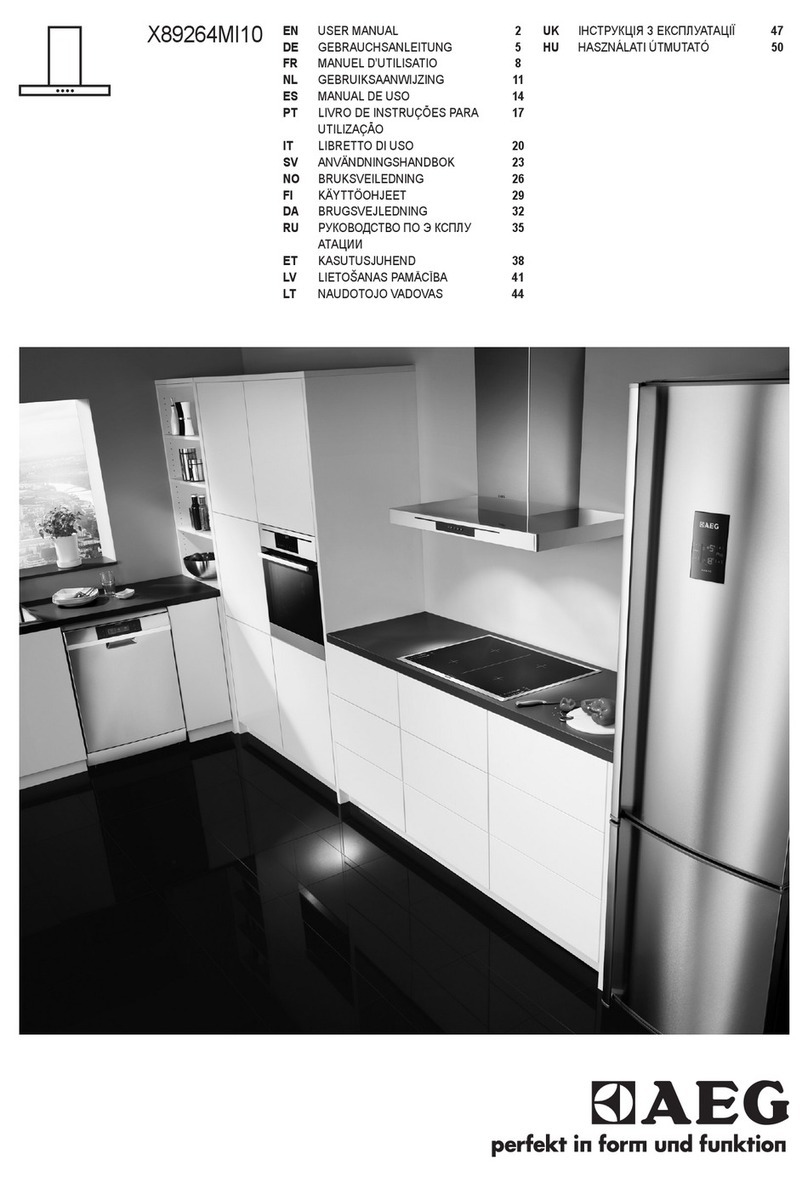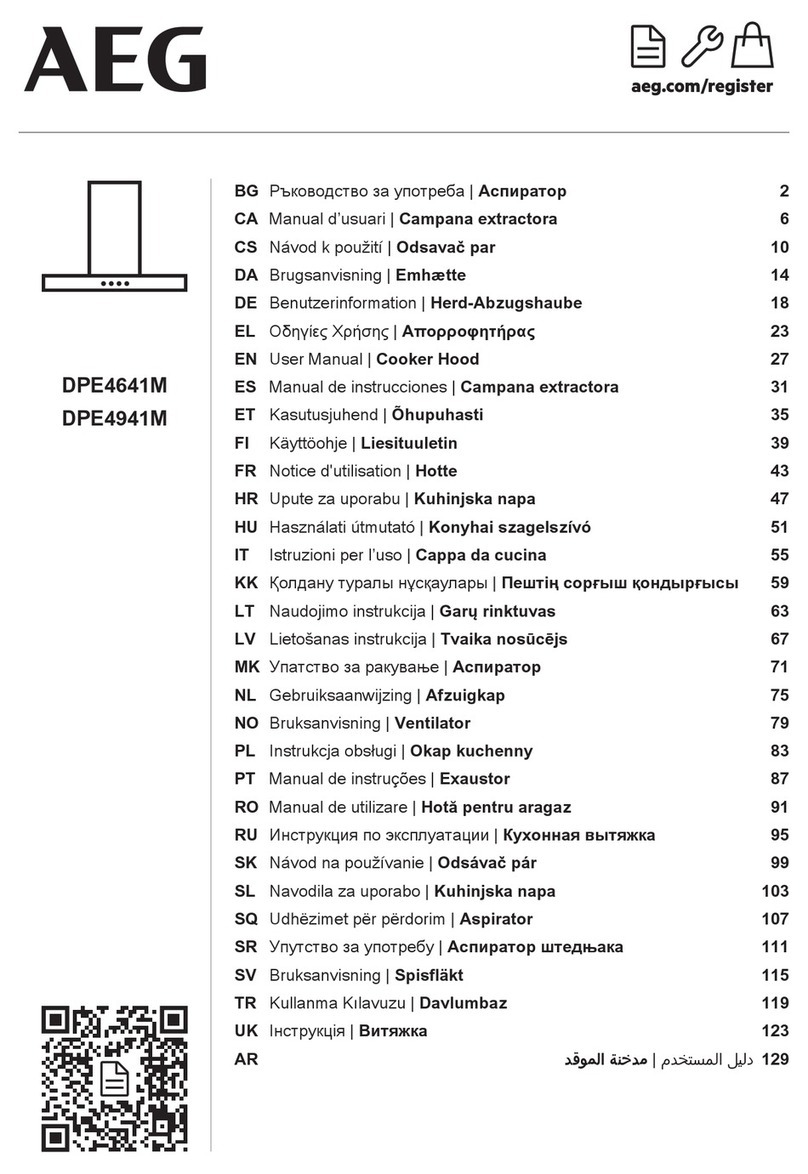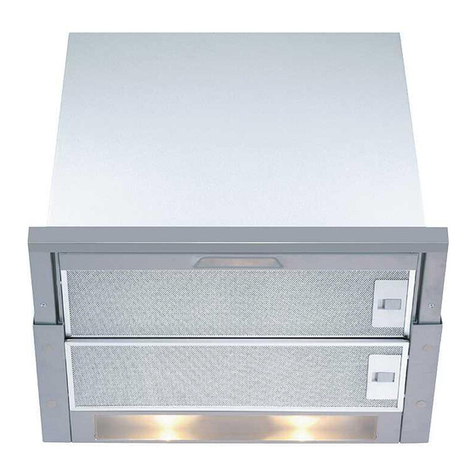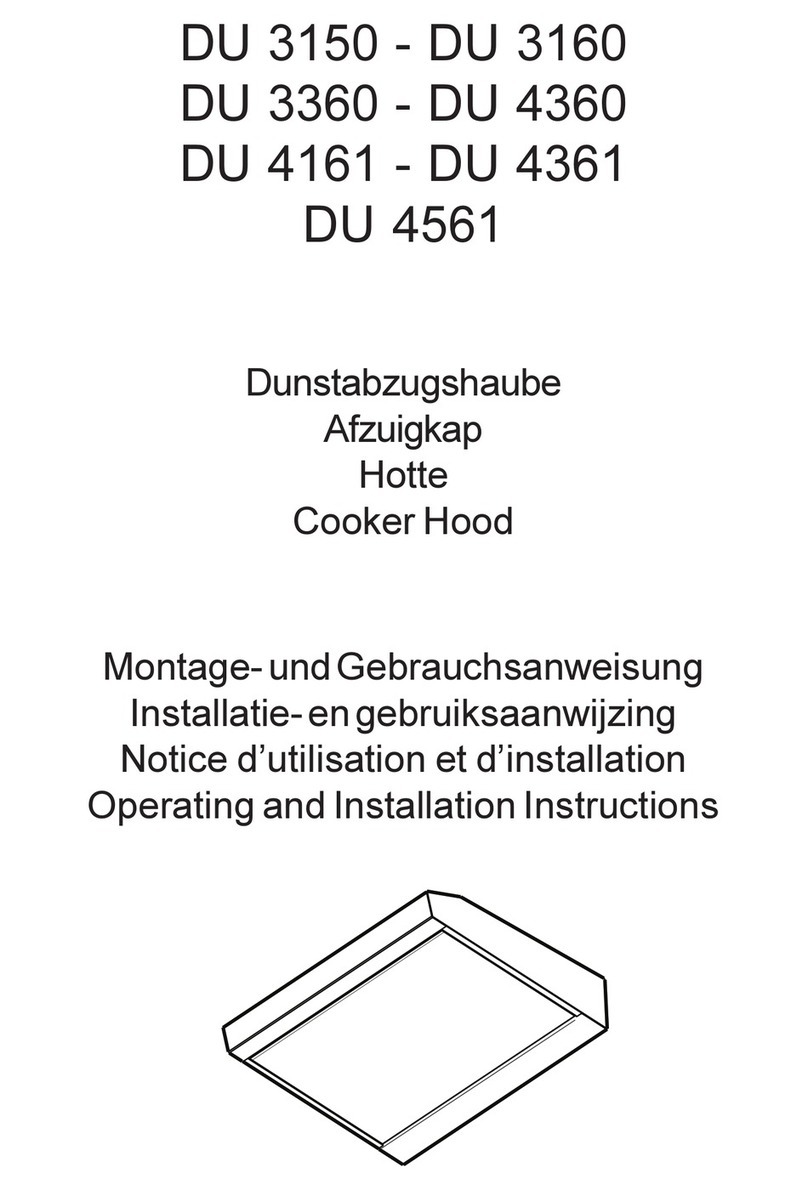74
Installation
Safety warnings for kitchen unit installer
• When used as an extractor unit, the hood must be fitted with a
120mm diameter hose.
• If the fumes must be forced out through the wall, you must obtain a
MKZ sizable wall exhaust pipe (with external exhaust and air
intake), E-Nr.- 610 899 004 (Ø 120 mm) which is one of our optional
parts.
•When installing the hood, make sure you respect the following
minimum distance from the top edge of the cooking hob/ring
surfaces:
electric cookers 650 mm
gas cookers 650 mm
coal and oil cookers 700 mm min.
• The national decree on fuel-burning systems specifies a maximum
depression of 0.04 bar in such rooms.
• The air outlet must not be connected to chimney flues or combus-
tion gas ducts. The air outlet must under no circumstances be
connected to ventilation ducts for rooms in which fuel-burning
appliances are installed.
• It is advisable to apply for authorization from the relevant controlling
authority when connecting the outlet to an unused chimney flue or
combustion gas duct.
The air outlet installation must comply with the regulations laid down
by the relevant authorities.
• When the unit is used in its extractor version, a sufficiently large
ventilation hole must be provided, with dimensions that are
approximately the same as the outlet hole.
• National and regional building regulations impose a number of
restrictions on using hoods and fuel-burning appliances connected
to a chimney, such as coal or oil room-heaters and gas fires, in the
same room.
• Hoods can only be used safely with appliances connected to a
chimney if the room and/or flat (air/environment combination) is
ventilated from outside using a suitable ventilation hole approxi-
mately 500-600 cm2 large to avoid the possibility of a depression
being created during operation of the hood.
• If you have any doubts, contact the relevant controlling authority or
building inspector’s office.
• Since the rule for rooms with fuel burning appliances is “outlet hole






